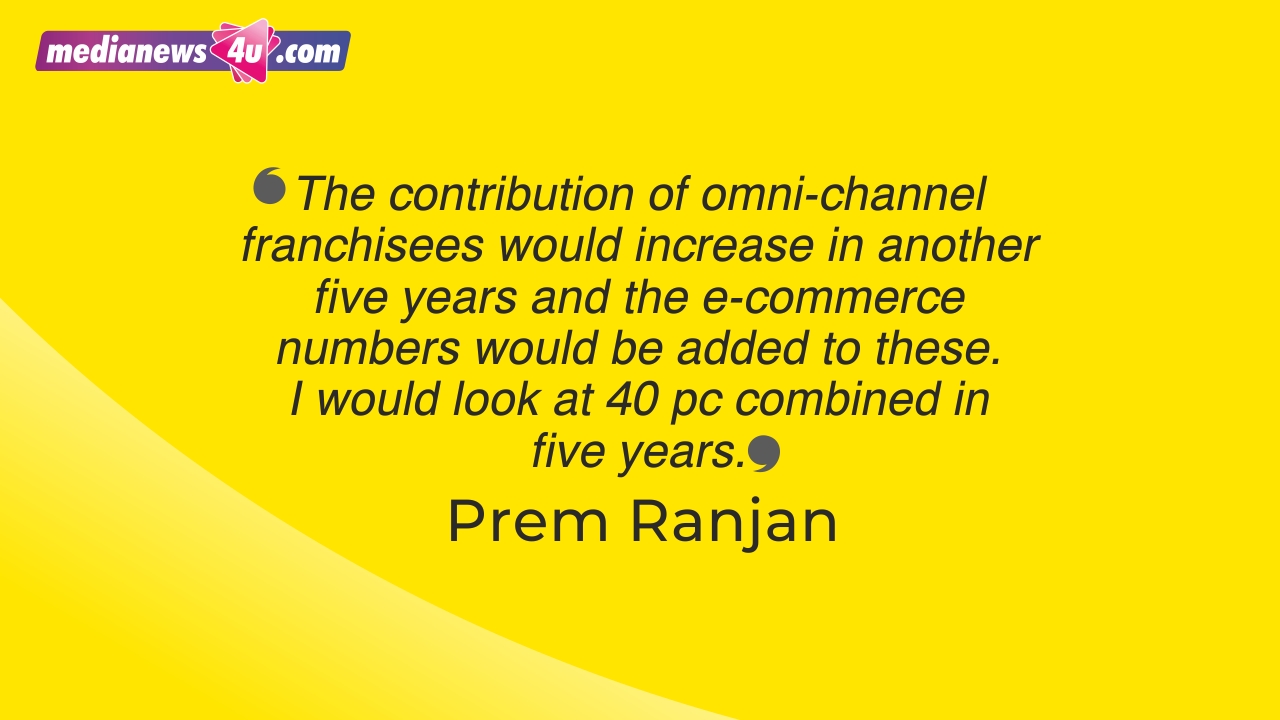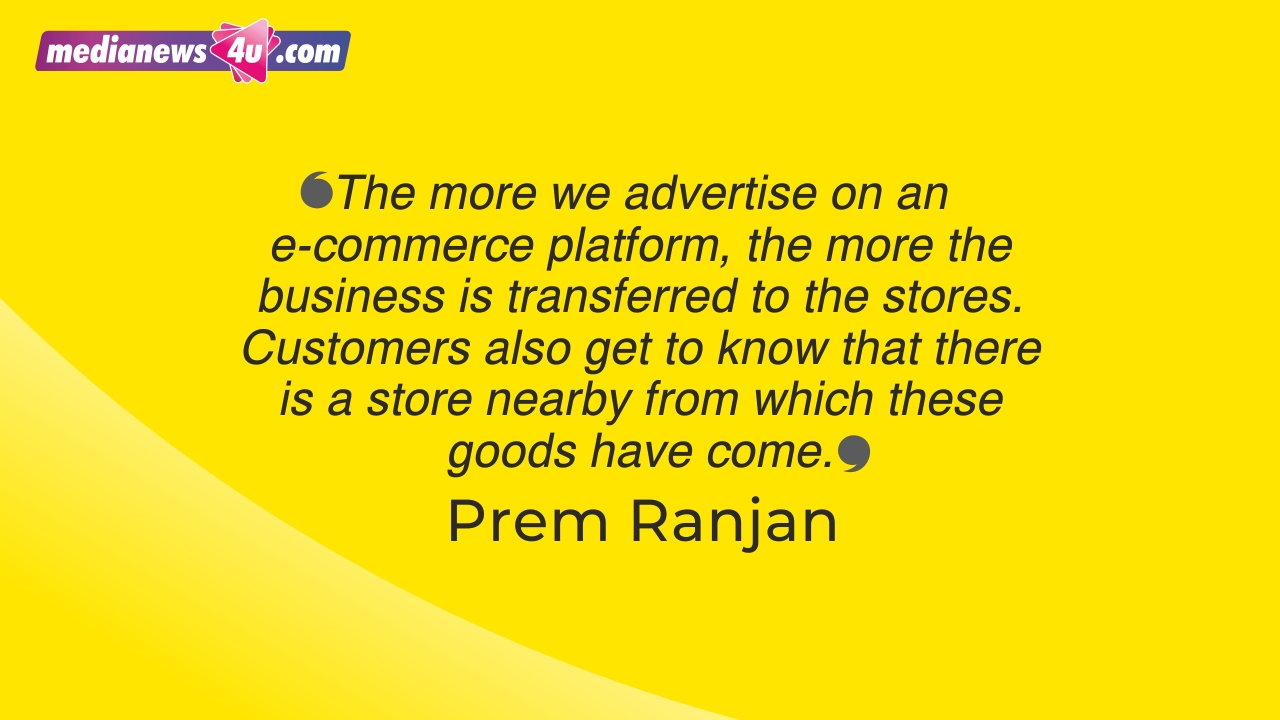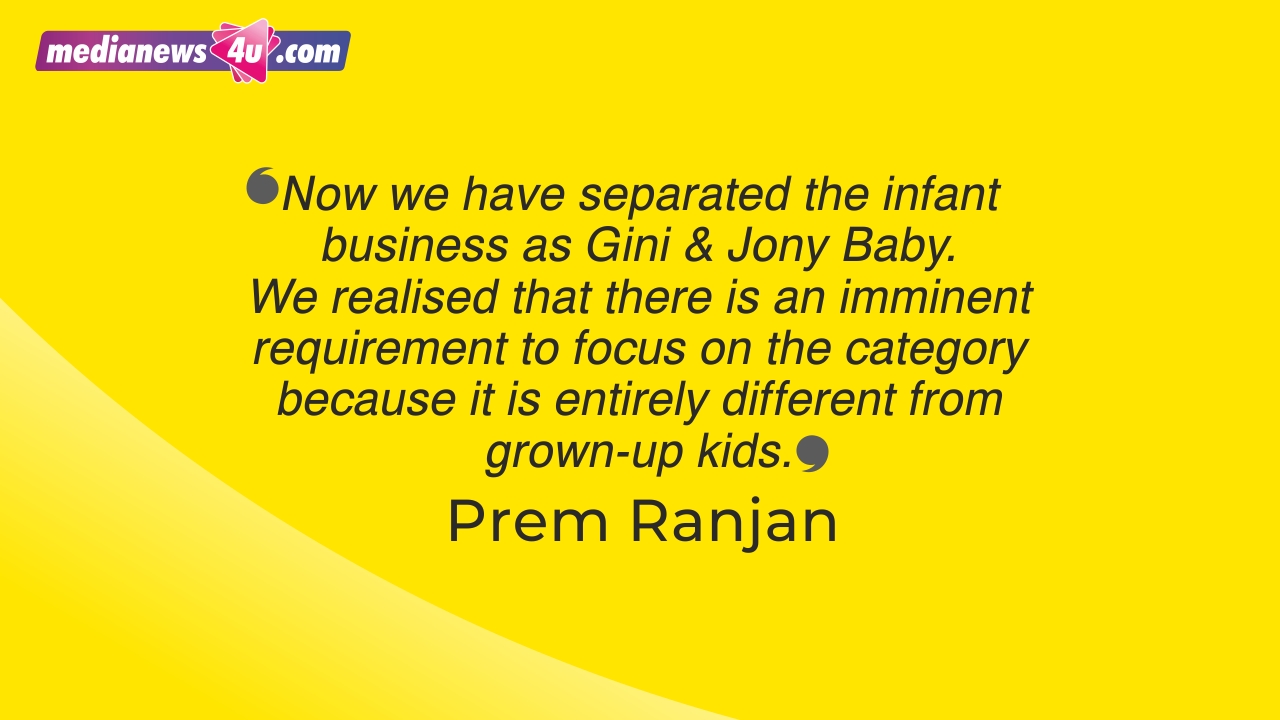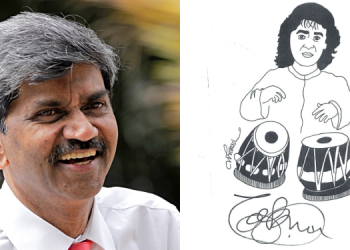“There is no big (exclusive) kidswear brand in India as of now,” says Prem Ranjan, who took over as CEO of the over 40-year-old brand Gini & Jony about three months ago. He came in with experience across the kids verticals at Reliance Retail and Pantaloons, besides having Co-founded KidSuperStore.in, an omni-channel retailer for kids fashion. And he is convinced that the over US$ 22 bn (2022) Indian kidswear market is something that Gini & Jony can have a significant play in, growing from its current (run rate of) Rs.190 cr to Rs.1,000 cr in five years.
There are a slew of brands of the size of Rs.4 to Rs.20 cr, reasons the CEO, which are mostly sold through large format stores like Lifestyle, Shoppers Stop, Pantaloons and Reliance, besides via online players.
“Gini & Jony has seen the evolution of brands in the Indian retail space in its 43 years of existence. It has therefore not just been able to understand the ethos of the Indian customer quite well, but also been able to serve its customers pan-India. It has seen its ups and downs – many highs and some lows. Gini & Jony is a premium brand as opposed to value brands. Our competition would be Benetton Kids, US Polo Kids and the like in the organised market,” explains Ranjan.
While several brands have sprouted here and there, many have faded away, he contends. “It’s a tough market. Gini & Jony’s expertise and relationships with its partners, especially dealers, distributors and large format stores has been its key USP. Plus, from a customer perspective, people have grown wearing the brand – a generation of kids who have now become parents. If you want to take kids out, to the mall, to special occasions, they would want a smart, high quality garment. So it caters to that aspiration of the middle class,” he elaborates.
Based on findings from a survey, Ranjan claims that Gini & Jony came out as the most known brand in kidswear – thanks without doubt to its legacy. People were appreciative of its quality and fashion quotient, something that the company wants to build on.
The growth the company aspires for is not going to happen organically. And no transformation is complete without technology, which dovetails into the brand’s omni-channel thrust.
Transformation Inside Out
“We need to adapt to the changing face of retail and that is where I am leading the brand to. We need to make use of all the sales channels – online, offline and both combined. All the sales channels are mediums to connect with our customers and we see it from that lens,” notes the CEO.
Numerous initiatives within the organisation have been initiated to transform Gini & Jony for operational excellence. A key factor the spokesperson outlines is the use of technology across departments. Second in the pecking order is shortening the lead time from design to shelf. Maximising the profitability through reduction of markdowns is another stated focus, which is a repercussion of the other initiatives. In order to achieve the above, there is recognition of the need for a cultural shift within the organisation.
A number of appointments have been made. Professionals who have seen Indian retail at scale are now being added to head functions like buying and merchandising, supply chain and finance. Employee benefits and incentive programmes are kicking in along with a new HR policy.
“To make it a digitally oriented company with a very professional culture is what I have been striving for and we should be able to do that in the next three months. We are also in the process of raising investments and in talks with multiple marquee investors to scale this business fast,” adds Ranjan.
The ambition is to cater to aspirational middle class India when the country becomes a Rs.5 trillion economy, as predicted by some, with attendant rising disposable income. The Gini & Jony CEO senses the opportunity to be at the forefront of kidswear in India when that happens. Yet for that to happen, the company knows that it needs to hang on to existing customers and align with the thought process of new parents.
“Our whole business is oriented to serve them. In five years, we should be touching (a GMV of) Rs.1,000 crore, up from a current run rate of Rs.190 cr. That’s a moderate target. We might end up achieving more,” he asserts.
Leveraging Changing Channels
The current share of online sales for Gini & Jony is 9 percent. Large format stores contribute a quarter of the sales, distribution chips in with 30 pc and the largest chunk comes from the brand’s exclusive stores while the factory outlets add a nominal 2 pc.
The brand’s retail presence is through 124 large format stores, 155 shop-in-shops, 280 multi-brand outlets, 15 factory outlets and through eight e-commerce platforms. It announced in early September that it had added over 50 new retail windows this quarter to its network of over 500. The number of exclusive brand outlets (EBOs) stands at 92, most of them franchised.
As the company looks to grow five-fold in five years, does it see a spike in the share of e-commerce?
“Normally what people would say is that from 9 pc online sales would go up to 20 pc. I see it differently. All my EBOs are omni-channel. The contribution of omni-channel franchisees would increase in another five years and the e-commerce numbers would be added to these. I would look at 40 pc combined in five years,” explains Ranjan.

Omni-channel Works
The company ran a pilot with 22 exclusive stores going live with its omni-channel drive – with the stores connected to online marketplaces. The technology connect is helping the online channel contribute 30 pc to each store’s sale. By next week, another 10 stores will be added, with the total number expected to touch 80 by December 2023. .
For omni-channel to work seamlessly, the transport and serviceability is a key aspect. For stores in remote areas, this might take time, cedes the CEO. All the other stores would be live by December, he adds.
While this arrangement holds for exclusive stores, the distribution channel will be more of a challenge as the point of sale billing software will have to be integrated with the brand’s own for it to work seamlessly. This challenge is seemingly insurmountable at present in the case of large format multi-brand outlets, but the attempt is on to figure a way to integrate the distributor channel with the brand’s omni-channel ambitions.
Premium Play
Gini & Jony is present across India but its biggest strength is in the East, reveals Ranjan. The region also contributes the most to sales. The North of India is an immediate area of focus. The admitted intent is to ‘resurrect’ the North business to its best days.
“East has been a very strong market for retailers traditionally, even if you take the example of brands like Pantaloons. Brands in value retail have started from the East and spread across India for a long time,” he adds.
But Gini & Jony is not a value brand and commands a premium. On average, Ranjan says the brand would be at a 30 pc premium over a mass kidswear offering.
“If you analyse kids’ fashion, there are two journeys to purchase. When kids come back from school and go to play, everyday play wear and regular wear are being bought from the department stores – the T-shirts priced at Rs.199, Rs.249 and so on. When they need to step out and need to dress up well, they take up Gini & Jony and US Polo and Benetton. It’s comparatively costlier to what value retail formats offer,” he explains.
Ranjan adds that the bandwidth of the middle class is quite high. “The gap between the lower middle class and upper middle class is quite big. The upper middle class goes for brands like Gini & Jony,” he notes.
Between smaller cities and the larger ones, there is no difference in appetite for premium kidswear, he asserts.
Ranjan reasons, “There is an upper middle class in even smaller tier towns. The number might be small, but even smaller cities and towns have businessmen and highly salaried people. Our store count might be different in smaller places depending on the population density, but there is an audience of buyers.”
Digital-first Marketing
The kidswear specialist is transforming itself into a digital-first entity in terms of marketing as well. Here again, omni-channel comes into play.
“The more we advertise on an e-commerce platform, the more the business is transferred to the stores. Customers also get to know that there is a store nearby from which these goods have come. This is one way of doing unified marketing for the stores,” he explains.

Geotagging customers in catchments around each store is being done. The stores themselves are also being digitsed. A centrally managed display network streams customised content and offers into stores. Onam offers, for instance, were streamed from Mumbai on 75-inch LED store screens in Kerala, targeting customers in the stores or the vicinity. Another leg of the marketing effort is stitching partnerships with payment and credit card companies, besides platforms and influencers targeting mothers.
“We do advertise on hoardings (and other media). But mostly, digitally building awareness is what we are trying to do. Today, we can safely say that 70 pc of the budgets would go to digital,” he adds.
Focus on Infants, Monthly Collections
The brand’s offerings start with infants (0 to 2 years) and straddle kids (2 to 8 years) and pre-teens (8 to 14 years). The biggest chunk of the business comes from the middle rung of ages upto 8 years. Both online and off, that segment is the biggest contributor to sales.
“Now we have separated the infant business as Gini & Jony Baby. We realised that there is an imminent requirement to focus on the category because it is entirely different from grown-up kids. From infant products to those for first-year birthdays, these kind of products are entirely different. Gini & Jony Baby is a sub-brand of Gini & Jony,” explains Ranjan.

Sixty percent of the business in the category of kidswear happens with the Autumn-Winter collection and 40 pc with Spring-Summer, estimates Ranjan. That is another template Gini & Jony has set out to change.
“What we are trying to do in Gini & Jony 2.0 is to break that and go on a monthly fashion push. We will produce garments every month, share it with trade partners and supply it to them and stores within 45 to 60 days,” reveals the CEO.
Starting December 2023, the company’s B2B portal will display these products each month. This, he underlines, is a new way of doing retail, because the supply chain needs to be faster.
“That is where many of the brands have not been able to scale. The reason for 90 pc of the business being unorganised (lesser known brands) is that their supply chain/distribution is laggard. Their ability to reach a larger audience sitting in a faraway place is affected and so the whole business is fragmented, although the market is very large. We are trying to solve this problem using technology,” he adds.
The company is looking to shorten the lead time in distribution, because as Ranjan explained earlier, this has a bearing on mark-down in prices. Using technology, the attempt is to reduce the time taken to sort goods at warehouses drastically for dispatch. Technology is also enabling correction of the ratio of products for Gini & Jony, by mapping it to demand.
Queries from the Middle East, Bhutan, Nepal and Russia are coming in but the brand’s focus is on setting things right on its path to 2.0 in India this year.
The festive season can contribute as high as 25 to 30 pc to the annual sales, says Ranjan. For the kidswear business it starts early, ranging from August to November. Then comes winter, another big contributor.
By which time, Gini & Jony wants to be all decked up. While staying true to its credo of ‘Let kids be kids’, the company wants to change the kidswear game.
(First published by The Free Press Journal BrandSutra. Content powered by MediaNews4u.com. Feedback: [email protected])

















